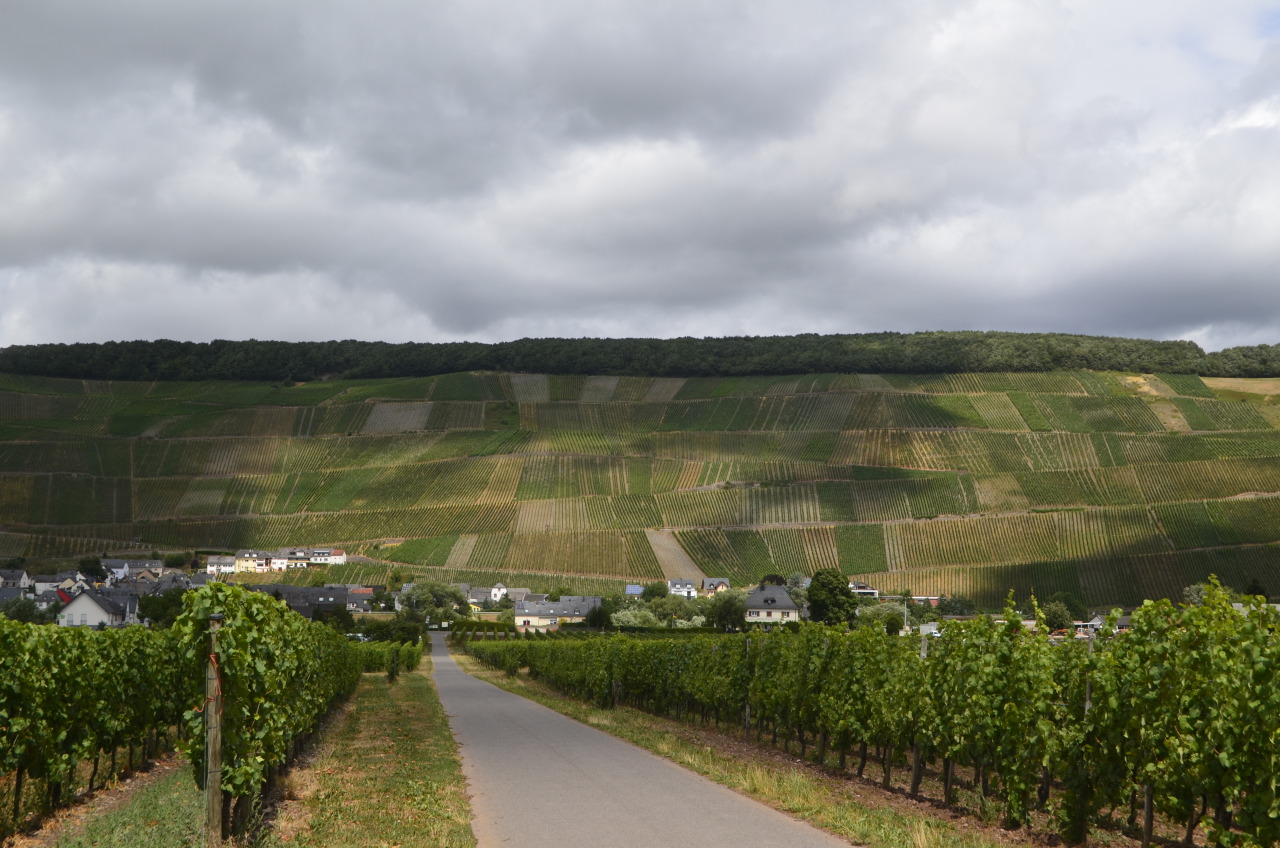The only place open in Enrich was a wine bar, with stiff black suited waiters, chandeliers and white table clothes that look as white as snow. My mum and I hover near the door, aware of our scruffy fluro coats and trainers, our sweaty, sunburnt faces and unwashed smell. We don’t fit in here, but there is no choice, this is the only place to eat in town.
One waiter moves towards us, smiling uncertainly. We are seated, our oil stained coats hung on special pegs among smart summer tailored jackets, and a wine menu thicker than my arm is presented to us. The cheapest wine in 30 euros a glass. We look at each other, restraining giggles, and when the waiter approaches us, we feel like the biggest frauds ever ordering two beers and a plate of chips.
Who bikes down the Moselle, through the most splendid wine region in the world and orders… beer? You can see it cross the mind of our neighbours at the restaurant. But who can argue with your body craving a cold beer after a day of cycling in the hot sun.
My mum and I decided to cycle the Moselle on a whim; we were interested in the Rhine or the Danude; something flattish and easy to navigate for two people who hadn’t toured much. Then, idly researching one evening, I saw a picture of the steep, vine covered hillsides and two cyclists grinning at each other over a glass of wine. That was it! Perfect.
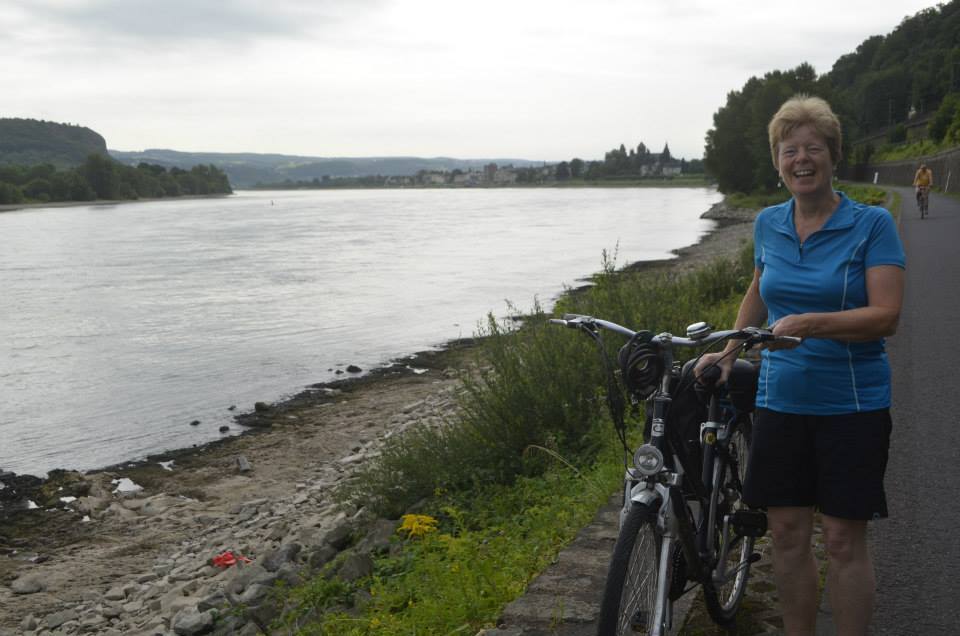
There was (quaintly) a book in the library on the route, but very little online, so planning was quite difficult. We decided take a train to Bonn, pick up some hire bikes, cycle down the Rhine until it snakes off into the Moselle River just outside of Koblenz, and then take the Moselle as it meanders all the way to Luxembourg City.
The first issue was hiring bikes; it was almost impossible to find anywhere to hire them from without also hiring a package holiday. We wanted to do it ourselves; we didn’t want someone taking out stuff and booking the hostels for us. In the end I contacted a bike shop in Neuwied and they agreed to rent us out some bikes for the trip.
The Moselle is a beautiful river. It meanders through steep hillsides and deep valleys, that at times rise up into a dramatic ravine. It’s sides are covered in vineyards so steep you need a pulley and rope system to pick the fruit. Each twist of the river presents a town more picturesque than the next; traditional dark beamed houses, with flower boxes overflowing, cobbles and fountains, and tiny churches. Every stop is waffles and cream and exquisite coffee, and of course, there was wine.
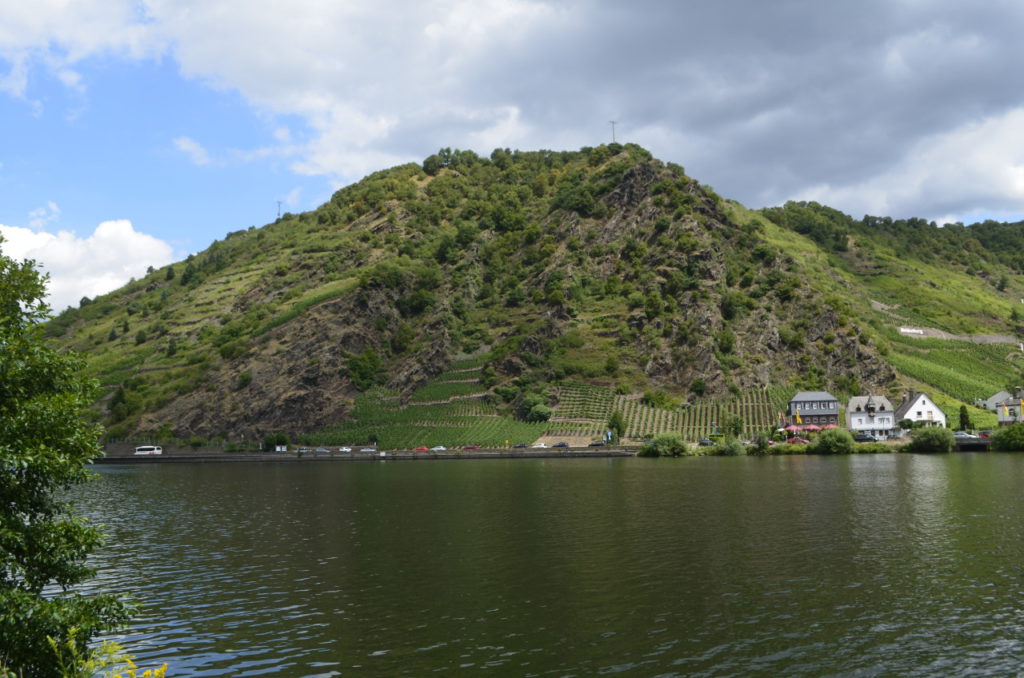
It was not only an amazing cycle ride, but also a relaxing holiday. We’d both been busy at work, so it was a great way to get away from everything. The route, following a river, was flat and easy to navigate, helped with fantastic signposts everywhere provided by the german government. With relatively few big roads or cities, it felt easy to slip into a relaxed, slow pace of life that immediately felt like being on holiday.
We arrived in Bonn, and stayed in the fantastic hostel BaseCamp Bonn, where you get your own personalised van to sleep in. We had a hippy van with it’s own flower garden, and my mum regailed me with stories about her 60’s youth which were probably too detailed. They also had a converted train carriage to sleep in, if you so wished.
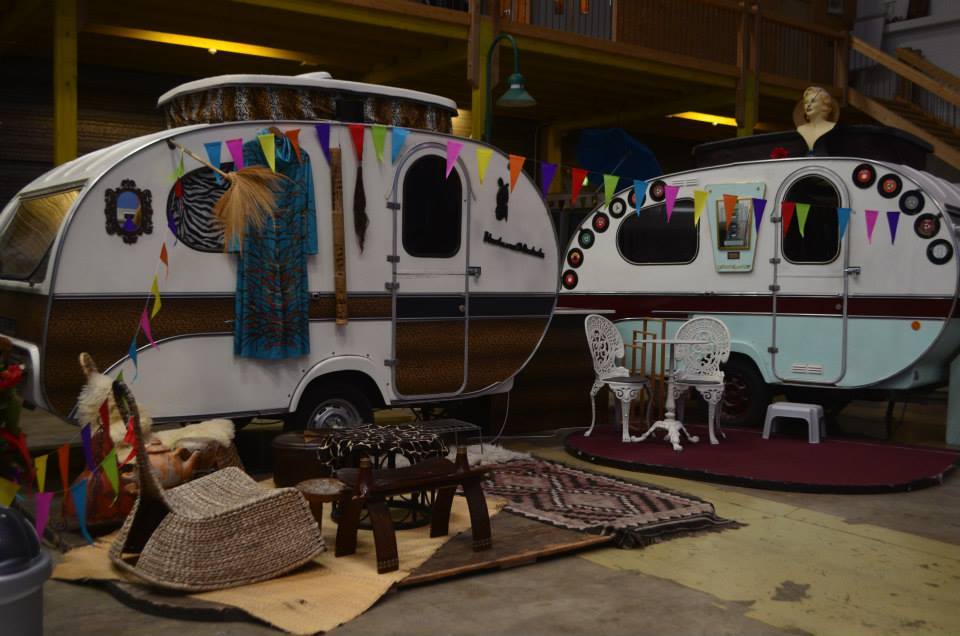
The next morning, we set off down the Rhine on the Rhine Cycle Path. This is totally off-road, and follows the giant meandering curves of the river south. I recommend the Dragon Hills as a superb place to stop off at on this stretch; it’s a steep climb (or a train ride up if you’re feeling lazy) up to incredible views over the Rhine valley. We locked our bikes at the bottom and walked up, powering past the train with contempt. The views over the Rhine valley were well worth the climb, and the apple strudel and coffee at the top was a brilliant incentive too.
From here, we stayed the night in Koblenz, admiring the huge statue of Emperor William l that overlooks the town, which today stands as a celebration of German reunification. While you’re there, don’t miss the oldest timber framed house in Germany, the Abteihof in Kobern-Gondorf, which dates from 1320.
Koblemz is also where the Moselle river starts. We rose early, and joined other commuters onto the the Moselle Cycle Path towards Luxembourg City.
The route along the Moselle was almost entirely off road. We spent the first day whooping as we plunged down steep valleys, under the spectacular Moseltalbrücke suspension bridge, and goggled at the vertical train tracks that dangled down the sides of the ravine, used for workers to pick the grape vines, which cling at near impossible angles to the slopes. Maybe the sheer insanity of having vineyards on the cliff-like sides of the ravine give the wine of the region a little extra je ne sais quoi.
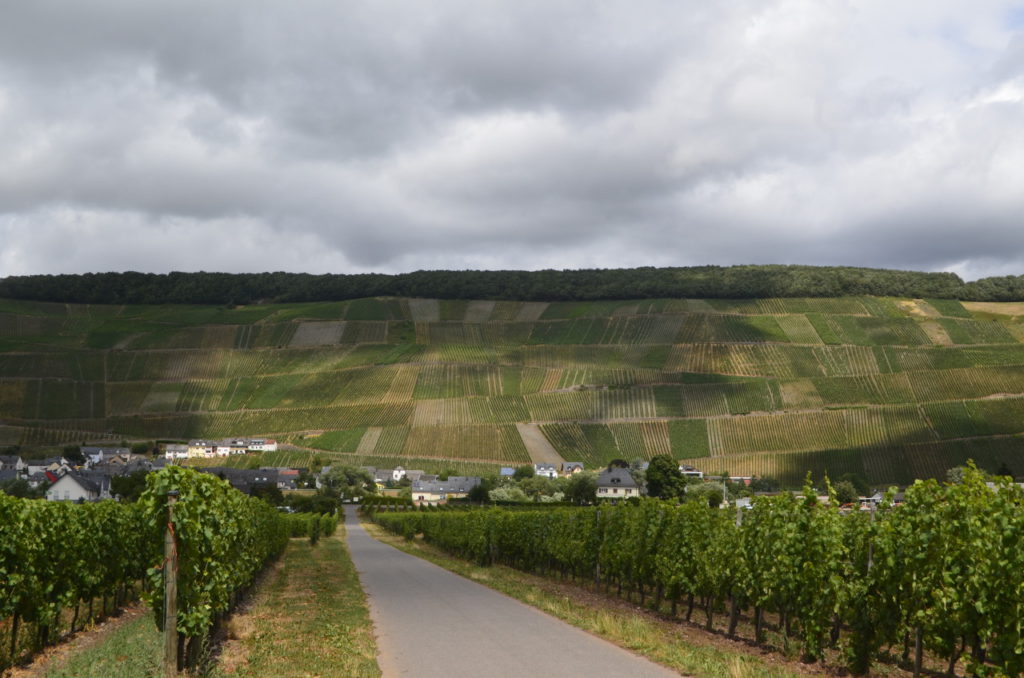
There were some fantastic things to see on the way. I recommend stopping at Cochem, which is like a fairytale town- set around the river, it is a mix of cobbled streets and traditional old houses, overlooked by the stunning Cochem Castle, which sits high on hill overlooking the town. The castle is a classic disney style one, with turrets and towers that turn into a magnificent silhouette against the setting sun. We took a cable car up the opposite peak to watch the sunset over the town.
Then there is Trier, Germany’s oldest town, with Roman baths to visit and over flowing with historical sites and buildings, The Imperial Thermal Baths (Kaiserthermen) are the highlight but other attractions include the medieval Hauptmarkt square, St. Gangolf’s Church, the Red House, the Porta Nigra, the Benedictine Abbey of St. Matthew and the fortified residential towers. We stayed in the youth hostel there and were greeted with a amazing breakfast spread; a continental breakfast of your dreams with at least 6 different types of cheese, fresh bread, fruit salad, meats, eggs, pastries, fresh orange juice and wonderful coffee. For a hungry cyclist, this was a highlight on the trip.
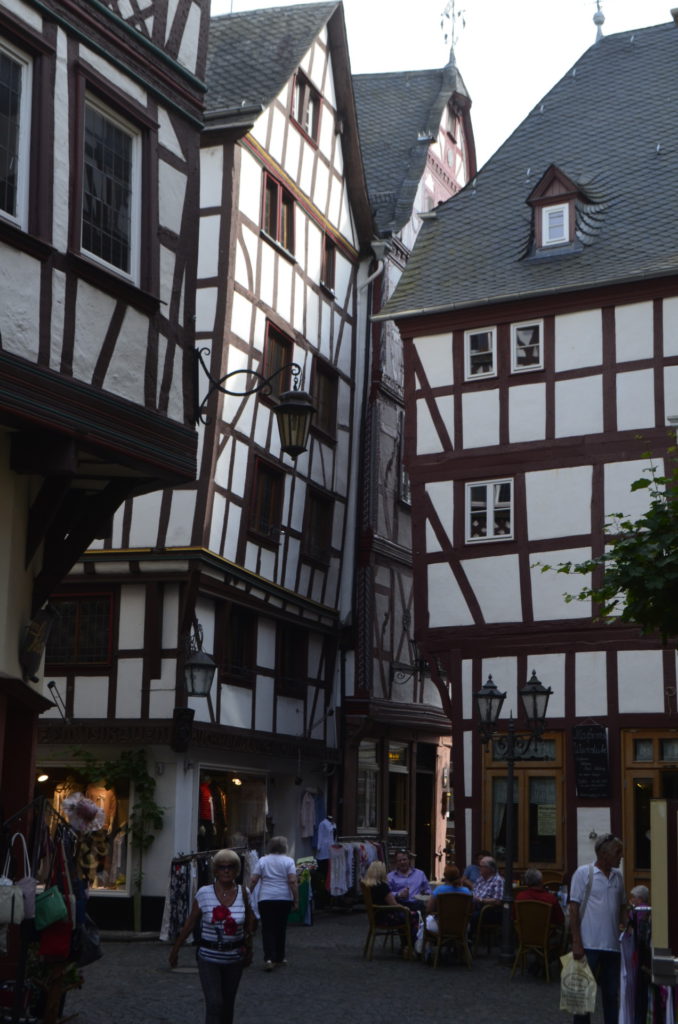
Along the route, there are some gorgous old towns to visit, such as Enrich or Bernkastel. which is famous for its medieval timber framed houses and the market square is a perfect spot for lunch. Every town is fantastic for the local delicacy of apple pie and cream. There are castles galore too- you can see Klotten, Bischofstein and Thurant in the first bit between Koblenz and Cochem, while further down, you can visit the ruined castle of Metternichs.
There is also many vineyards to visit. I am not a natural wine drinker, but I recommend visiting- if not stopping for a sample glass at some of these. The wine yards of Trittenheim and Neumagen-Dhron are some of the oldest wine-growing places. Around Cochem, there are the steepest wineyards in the world. Zell is a wonderful wine growing village too.
You finally end up at the small town of Schengen on the tri-country border with Germany and Luxembourg, well known as the place where the treaty providing open borders throughout Europe was signed. This feels super historic and perfect; one side of the bridge is France and Germany, one side Luxembourg- it just goes to show unimportant borders really are. We took the obvious- one foot in Germany/one foot in France picture, and then set off for the final stretch.
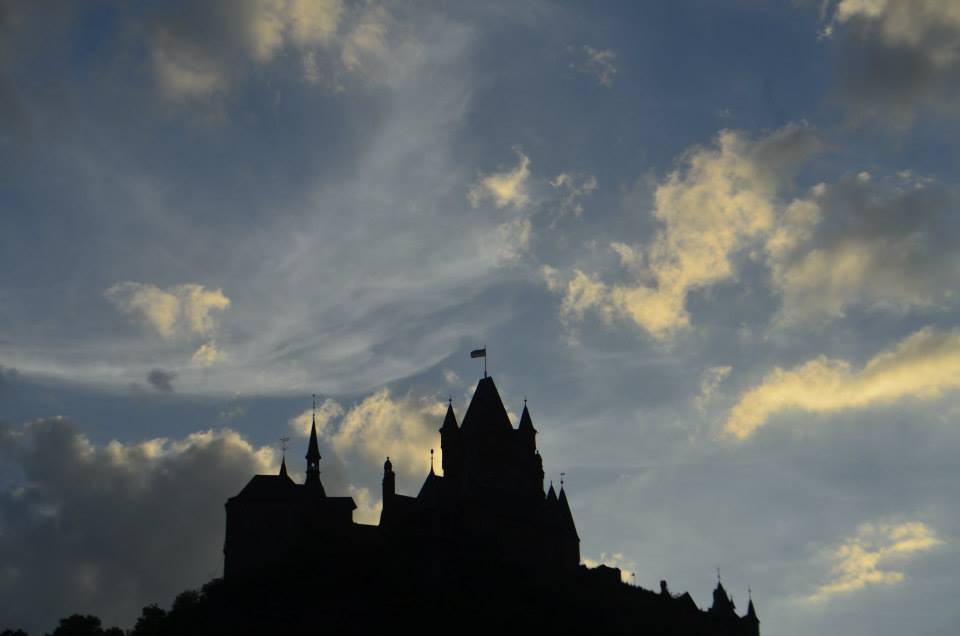
It was a spectacular cycle ride in to Luxembourg city. Luxembourg City is full of surprises. As you cycle into the centre, you pass some dizzying views of the Alzette River gorge – flanked by spiky-spired houses and battle-worn 17th-century ramparts.
Luxembourg City first served as a fortress – although it was unable to defend itself against foreign powers for hundreds of years. It was controlled by various Spanish, French, Austrian and Prussian armies from the 15th century, with that imposing river gorge serving as a natural barricade. And now those tumultuous territorial clashes are over, modern-day Luxembourg City actually celebrates its battle wounds – the most spectacular of which is the Alzette gorge’s honeycomb of old military tunnels, hewn over centuries by pick axe and gunpower. They once sheltered hundreds of soldiers, who would poke their cannons through shadowy openings to fire on marauding forces in the valley below. Today, you can poke your head through those same nooks to gaze over one of Europe’s most picturesque, peaceful – and underrated – capitals.
My mum and I put out feet up in the spectacular Luxembourg, ready for a train back to Bonn and home, we finally felt ready to have a glass of wine from the region. We asked the waiter to recommend us.
